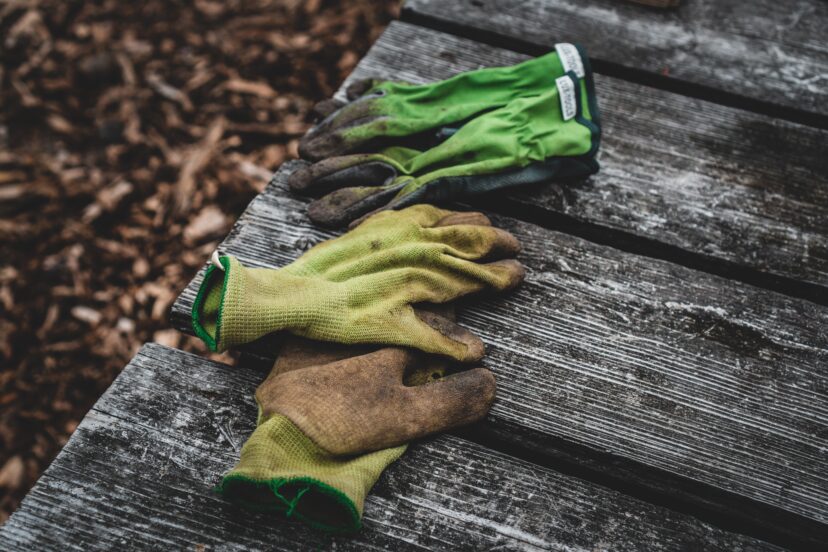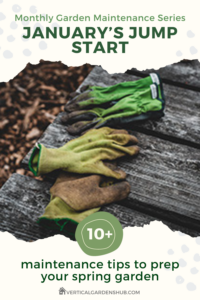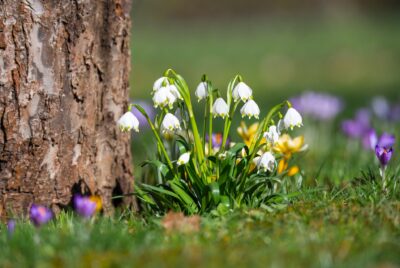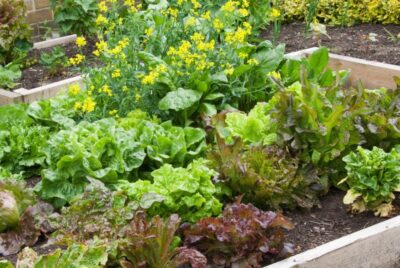Garden Maintenance: January’s Jump Start
With the promise of spring before us, January signifies the ideal time to start garden maintenance projects and to prep and plan your garden. Even though it’s not the warmest of weather, our gardens do look worse-for-wear, and need a bit of help. Whether you garden in urban areas, your own back yard, in containers or vertically, these small but mighty tasks keep you busy, and the benefits will be numerous. Each month we’ll continue our garden maintenance series by exploring the tasks you can do to help your garden grow and thrive throughout the year.
In This Article:
- Walk your Garden
- Keep Plants Covered
- Harvest your Winter Vegetable Garden
- Spring Garden Planning
- Make Seed Purchases
- Maintain Garden Tools
- Inventory Garden Supplies
- Organize Sheds, Greenhouses, and Garage
- Sprinkler Systems and Hoses
- Clean Bird Feeders and Birdbaths
- Clean Out and Store Garden Pots
- Check on Overwintered Bulbs and Plants
- Dormant Seed Lawn Bare Spots
- Indoor Plants Need Love Too
This article contains affiliate links to products for your convenience. Vertical Gardens Hub may earn a small commission from purchases made through these links at no additional cost to you. Please see our disclaimer to learn more.
Walk your Garden
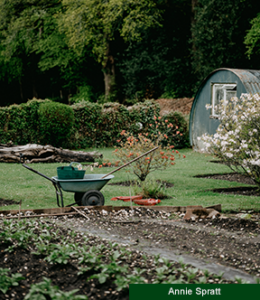 Wind, rain, sun, and snow can wreak havoc on our gardens. The first garden maintenance task at hand should be a walk through your garden to check for damage and problems caused by the elements. Not only assess your garden, but look at your lawn, containers, raised beds, fence, greenhouse, shed, and garage—any item or location used for gardening needs.
Wind, rain, sun, and snow can wreak havoc on our gardens. The first garden maintenance task at hand should be a walk through your garden to check for damage and problems caused by the elements. Not only assess your garden, but look at your lawn, containers, raised beds, fence, greenhouse, shed, and garage—any item or location used for gardening needs.
Don’t forget to take a garden planner or a paper pad with you for jotting notes on what garden maintenance is needed. Remember all items on your list don’t need completion now, but you will have a comprehensive list that you can prioritize and check off one by one as they are completed.
Keep Plants Covered
Continue to keep your plants covered in this cold weather. After your walk through, re-cover your plants until after your regions last frost date. This includes plants in containers and open to the elements – if needed.
Harvest your Winter Vegetable Garden
Enjoy the final bounty of vegetables from your winter garden. Once harvested, clear out the plants and add to your compost pile. Add a fresh layer of organic matter or compost and loosely turn the soil over. The remaining winter weather will help break down the mulch releasing nutrients into the soil. Your garden will be ready for plants in a couple of months.
Pruning
Pruning should happen when the plant is dormant, preferably in mid-to-late winter before active growth begins. Plants to prune at this time of the year are evergreens, deciduous shrubs, hedges, and fruits. Cutting back ornamental grasses and perennials is a plus too. It is important to prune the right plants in the right way. Pruning at the wrong time or incorrectly can cause damage and prevents new growth and flowering. If pruning is new for you, its recommended to talk with a local arborist to determine what is best for your zone, and your specific plants.
Spring Garden Planning
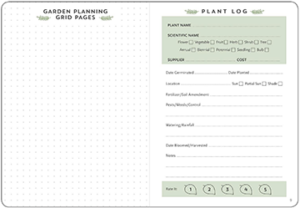 Planning your gardens ahead of time helps you make the most of your time, energy and space. Use your garden planner to lay out your vegetables, flowers, and container gardens at the same time to see where any holes can be filled with new plants. Make a list of seeds and plant starts needed and where they’ll be placed. For a head start, sow your seeds indoors 4-6 weeks before your regions last frost date.
Planning your gardens ahead of time helps you make the most of your time, energy and space. Use your garden planner to lay out your vegetables, flowers, and container gardens at the same time to see where any holes can be filled with new plants. Make a list of seeds and plant starts needed and where they’ll be placed. For a head start, sow your seeds indoors 4-6 weeks before your regions last frost date.
Make sure to rotate crops to protect them from pests and diseases. Look at new and different crops you can plant and how companion planting can help deter pests and other great benefits.
Make Seed Purchases
From your garden planner, you should know what plants and crops to plant for spring and how many seeds or seedlings you’ll need. It’s preferable to purchase non-GMO organic heirloom seeds from your local garden store or reputable online seed company. Community seed exchanges or an online seed exchange are also good options. Better yet, use your own seeds saved from fall.
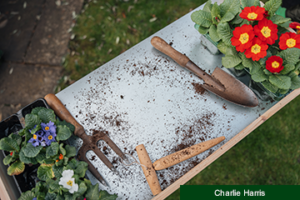 Maintain Garden Tools
Maintain Garden Tools
Hand tools should be cleaned, sharpened, and moving parts oiled. Power tools like mowers and weed trimers should also be cleaned, motors tuned, and blades sharpened. Any batteries should be removed and stored indoors as cold temperatures can shorten the battery life.
Inventory Garden Supplies
Double check your garden supplies. Replace gloves, arm sleeves, and buckets, if worn out, torn, or cracked. Stock up on twine, seed pots, fertilizer, container soil, plant markers, mulch, etc., so they’re on hand when needed.
Organize Sheds, Greenhouses, and Garage
These structures can become dumping grounds for extra gardening tools, supplies and junk. January is a good time to get these organized and ready for a busy growing season. Here are a few tips to keep things tidy:
- Hang Pegboard: Along with hooks, baskets, magnetic bar and small shelves, pegboard is a great organization staple and makes finding items easier.
- Add Open Shelving: Help free up the floor by installing open shelves for larger items. Make them adjustable to fit small and larger items.
- Repurpose Bookshelves: Upcycle old bookshelves at garage sales or online marketplaces. They are a great way to add additional storage for extra garden items, toolboxes or planters.
- Use Plastic Baskets & Tubs: Perfect for storing extras like hardware, cords, and other odds and ends you don’t want to through away.
- Install a Tool Hanger: Create easy access to your long handed tools like rakes, shovels and brooms by hanging them on the wall.
Sprinkler Systems and Hoses
If not yet completed, blowout sprinkler systems to prevent damage from freezing temperatures. Repair or replace leaky sprinkler heads, hoses, and nozzles. And make sure your faucets are covered to prevent frozen pipes.
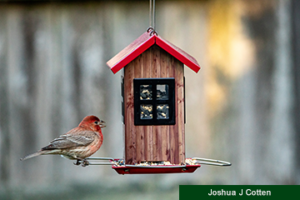 Clean Bird Feeders and Birdbaths
Clean Bird Feeders and Birdbaths
No matter the season, bird feeders and birdbaths need regular cleanings every two weeks to help prevent diseases. Dry out the feeders before hanging and refilling them.
Clean Out and Store Garden Pots
If you haven’t done so already, your pots need protection from the elements too. Deep freezes can wreak havoc on containers, flowerpots, and other features in your garden. Empty out the soil, scrub them clean and place them into a shed or garage.
Check on Overwintered Bulbs and Plants
Make sure your bulbs and tubers pulled out of the ground from fall aren’t too dry or to wet. Overwintering container plants should be checked to see if they need a drink of water as well.
Dormant Seed Lawn Bare Spots
Dormant seeding is the practice of sowing grass seed in the winter months when seeds are inactive. If you live in an area that is consistently cold and snowy, seeding in January is a way to get a head start on a green lawn. It can help eliminate bare spots and thickens turf to fight spring weed pressure.
Indoor Plants Need Love Too
Even though we see and care for our indoor plants weekly, it’s good to do a thorough deep watering (from the bottom) and check for pests, rot, and other diseases. Cleaning of the leaves is wise as well. Dust and dirt can block sunlight and during the winter months they need all they can get.
Final Thoughts
There is always so much to do to keep things well-cared for in our gardens. The efforts invested now set the stage for a lush and vibrant garden in the warmer months ahead. Embrace the winter challenge, and watch your garden thrive.
FAQs:
Q: Can I prune my plants in January, or is it too early? A: January is an ideal time for pruning, as it promotes healthy growth and shapes your plants for the upcoming seasons.
Q: What’s the importance of a garden journal? A: A garden journal or planner records important garden events. Everything from garden planning, sowing seeds, plant growth, harvest timing, challenges, successes, and even record wildlife visitors. Taking notes keeps you ahead of the game and makes it simple to find information when you need it.
Q: Can I still join online gardening communities in winter? A: Absolutely! Winter is an excellent time to connect with fellow gardeners, share tips, and learn from collective experiences.
Q: Can I start planting seeds outdoors in January? A: Yes you can sow seeds outdoors however, it’s advisable to start seeds indoors and transplant them outdoors as weather conditions become more seedling favorable.
Q: How often should I water my garden in winter? A: Adjust watering schedules based on the weather. Typically, plants need less water in colder months, but monitor soil moisture to ensure plants don’t dry out.
Q: I would like to build a vertical garden, what are some structures to use? A: Consider wall-mounted planters, trellises, or tiered shelving to maximize space without compromising on aesthetics.

